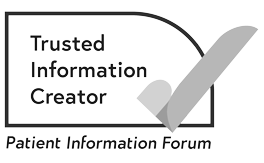Barium swallow or water-soluble swallow
What is a barium or water-soluble swallow?
A barium swallow or water-soluble swallow is a type of x-ray of the oesophagus (gullet), and stomach and first part of the small bowel. It is named after a liquid (contrast) you swallow during the x-ray. The oesophagus and stomach are difficult to see on a regular x-ray.
The contrast shows up white on the x-ray. This helps give much clearer pictures of the oesophagus and stomach.
You may have a barium contrast. This is a white liquid with a chalky texture. Or you may have a water-soluble contrast. This is a clear liquid, sometimes called Gastrografin.
You may also be asked to swallow granules. These produce gas to help outline the stomach and get clearer pictures.
Related pages
Having a barium or water-soluble swallow
You have a barium or water-soluble swallow in the hospital x-ray department. A doctor called a radiologist or a specialist radiographer will do it. You usually have it as an outpatient, so you should be able to go home the same day.
The x-ray uses a small amount of radiation. So it is important to tell your doctor before if you are pregnant or think you might be.
Your doctor, nurse or radiographer will ask you not to eat or drink anything for several hours before the x-ray. They will also give you instructions about any medicines you are taking.
The x-ray usually takes about 20 to 30 minutes.
What happens during the x-ray?
You will be asked to stand in front of the x-ray machine. The radiologist or radiographer will ask you to drink a liquid that contains the contrast.
They will take x-rays while you are drinking. They will take x-rays from different angles, so you may need to change position. They may take x-rays while you are lying down.
After the x-ray
You will be able to eat and drink as normal after the x-ray.
If you have had a barium swallow, your stools (poo) may be pale or white for a few days. This is the barium passing out of the body and is nothing to worry about.
Barium can cause constipation, so it is important to drink plenty of fluids for a few days after the x-ray. It may also help to have a high-fibre diet, if you are able to. This includes fruit and vegetables and wholegrain cereals and bread.
-
References
Below is a sample of the sources used in our small bowel cancer information. If you would like more information about the sources we use, please contact us at informationproductionteam@macmillan.org.uk
AB Benson, AP Venook, MM Al-Hawary et al. Small Bowel Adenocarcinoma, Version 1.2020, NCCN Clinical Practice Guidelines in Oncology. Journal of the National Comprehensive Cancer Network, 17(9), 1109-1133. Available from: www.jnccn.org [accessed January 2023].
National Institute for Health and Care Excellence (NICE). Wireless capsule endoscopy for investigation of the small bowel. Published: 15 December 2004. Available from: www.nice.org.uk/guidance/ipg101 [accessed January 2023].
Date reviewed

Our cancer information meets the PIF TICK quality mark.
This means it is easy to use, up-to-date and based on the latest evidence. Learn more about how we produce our information.
The language we use
We want everyone affected by cancer to feel our information is written for them.
We want our information to be as clear as possible. To do this, we try to:
- use plain English
- explain medical words
- use short sentences
- use illustrations to explain text
- structure the information clearly
- make sure important points are clear.
We use gender-inclusive language and talk to our readers as ‘you’ so that everyone feels included. Where clinically necessary we use the terms ‘men’ and ‘women’ or ‘male’ and ‘female’. For example, we do so when talking about parts of the body or mentioning statistics or research about who is affected.
You can read more about how we produce our information here.





